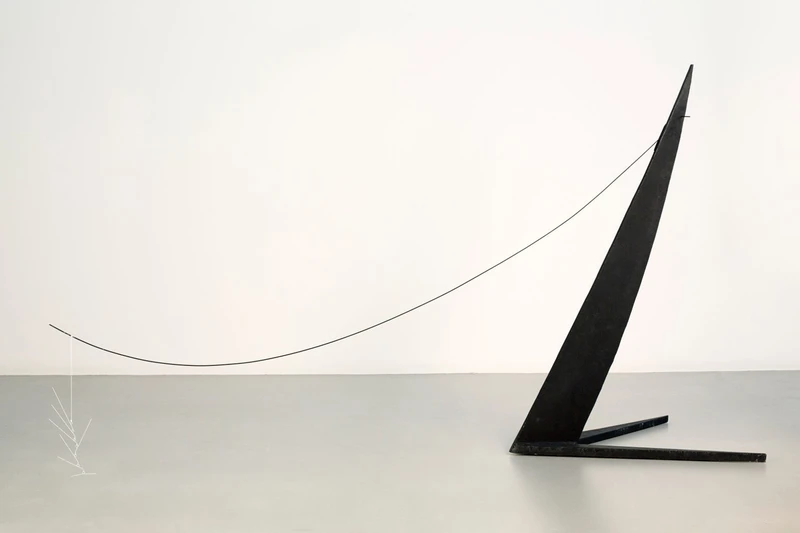Calder: Extreme Cantilever
9 Oct-22 Nov 2024


Ben Brown Fine Arts is delighted to present Calder: Extreme Cantilever, an unprecedented exhibition that brings together for the first time Alexander Calder’s three cantilever sculptures, alongside a curated selection of oil paintings, works on paper, and historically significant artifacts. This exhibition illustrates a pivotal shift in Calder’s formal and conceptual approach to spatial abstraction amid the global upheaval of the Second World War. On loan from the Calder Foundation and esteemed private collections, Calder’s three standing mobiles – Extreme Cantilever, More Extreme Cantilever, and Extrême porte à faux III – showcase the artist’s unbridled imagination and intuitive genius that cement him as one of the 20th century’s foremost innovators.
Born in Lawnton, Pennsylvania, Calder revolutionised modern art by commandeering motion, form, and space in ways that fundamentally altered its course. His innovative massless wire sculptures, in which he manipulated wire to “draw in space,” introduced the traditionally two-dimensional qualities of drawing – the line and plane – into the three-dimensional realm. A pivotal moment in Calder’s artistic evolution occurred in October 1930 when an experience of the all-encompassing environment of Piet Mondrian’s Paris studio ‘shocked’ him toward total abstraction. This transition climaxed in 1931 with his invention of the ‘mobile,’ a term coined by Marcel Duchamp evoking both ‘motive’ and ‘motion’ in French. These revolutionary kinetic objects capture the dynamism and unpredictability of the 20th century, and transform sculpture from a static art form into a fluid, changeable medium, thereby establishing Calder as a pioneering figure in modern art.
In the aftermath of World War II, as the world confronted a collective reckoning with the trauma it had endured, Calder embarked on the creation of strikingly evocative sculptures featuring increasingly complex forms. While these works are entirely abstract, they resonate with the political upheaval of the period. “In many of his new objects, Calder was rejecting the idea of a work of art as a single unified image, in favor of a pileup or visual cacophony of elements and movements,” writes Calder biographer Jed Perl. “He was responding, in his own unique way, to the tangled emotions of the war years.” While the three sculptures on view in Calder: Extreme Cantilever feature an economy of form, the contrast between the long, cantilevered wires and the delicate mobiles that hang from them creates a powerful and dramatic tension.